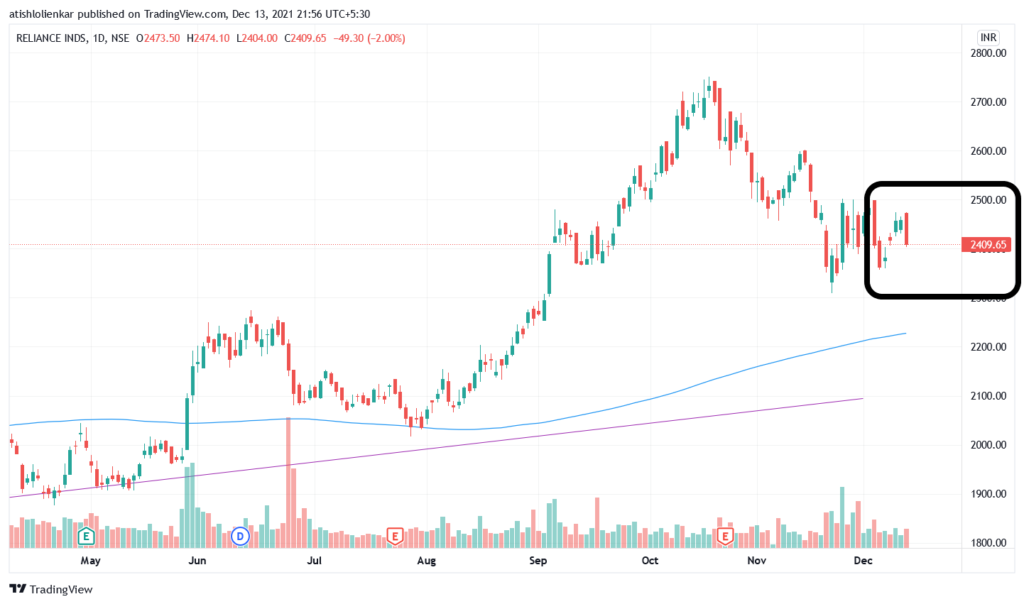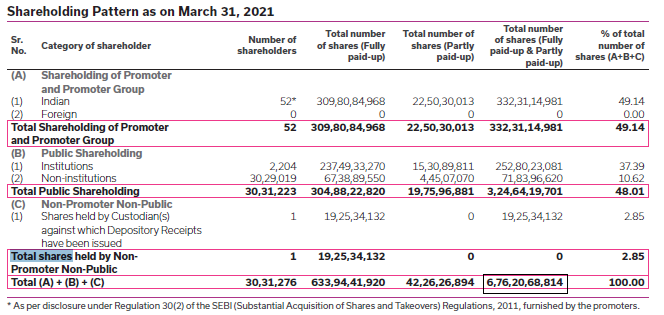What is a Price To Earning Ratio
Price to Earning, commonly referred to as the PE ratio, is a financial ratio used to check the fundamental value of a stock. A Price to Earning ratio will tell the investor how much he is willing to pay for the business to earn Rs. 1/- from it.
This ratio may also be used to compare a company’s past performance to its own, as well as aggregate markets to one another or over time.
For example, a company with a PE ratio of 20 simply means that an investor is paying Rs. 20/- today to earn Rs. 1/- it in the future.
Representation of PE Ratio
Mathematically, we can write PE ratio as:
P/ E Ratio=Market value per share / Earning per share
Where,
- Market value per share is the current price at which the stock is trading.
- Earning per share is the earning corresponding to single share of the company
Earning per Share can be further calculated as:
EPS = Net earning of the company / Total number of shares.
- Net earning of the company is the net profit the company has made in the that particular financial year.
- Total number shares is the total tradable shares floated in the stock market against that company.
Step by step guide to calculate the PE ratio
Step 1: Understanding the basic requirement for getting the PE ratio
In order to calculate the PE ratio of a company, we will need the following data:
- The last traded price of the company
- Total number of shares of that company
- Net earning of that company for the said financial year
For our understanding, Let us try to find out the PE ratio of Reliance Industries (As on December 2021)
One needs to note that PE ratio tends to change with change in price, so the PE ratio today may not be the same tomorrow.
Step 2: Determine the current price of the company
Current price is the value that the stock of the company is currently trading. For simplicity, one can take the last traded price of the stock as current price.
We can get this data from the LIVE National Stock Exchange website or Trading-view chart app.
Moving with our example of Reliance Industries, the Current price is : Rs. 2409/- (As of December 2021) as we have got from the chart below.

Step 3: Determine the net earning of the company
The net earning from the company can be derived from the Annual Report of that company.
The net earning is also defined as the net profit of the company. This is the amount that gets incurred after all the deductions of all the expenditures, interest payout and taxes from the company.
As of 2021, the net earning of the Reliance was Rs. 1,96,059 Crores. As can be seen from the snippet from the Annual Report (2021) of Reliance.

As seen in the statement above, there are two types of profits, standalone and consolidated.
Briefly explaining the difference between them, standalone figures are the profits made by the parent company alone, where else consolidated figures are the profits made by the parent company as well its subsidiaries.
Research Analyst usually take the values from the consolidated statement as it gives the true figures of the company. A company like Reliance many have multiple subsidiaries and having the figures of the parent company alone may not be justifiable.
Step 4: Find out the total number of shares of the company
The last data we will require is the total number of shares of the company are available in the market. This can be taken again from the Annual Report, in the share holding section.
Total number of shares of Reliance Industries: 6,76,20,68,814 (As per the table given below)

Thus, Earning per Share = Net earning of the company / Total number of shares.
Rs. 1,96,059 Crores / 6,76,20,68,814 = 28.99
Therefore, the Earning per Share Reliance is 28.99. This data tells us that against 1 share, the company has made Rs. 28.99.
Thus coming to calculating the PE ration of Reliance:
PE ratio = Market value per share / Earning per Share
2409 / 28.99 = 83.09
Therefore the RE ratio of Reliance Industries is 83 (For consolidated earnings)
What happens if the PE ratio of a stock is 1
When the PE ratio of a company is 1, it means that investor is paying Rs. 1/- to earn Rs. 1/- from the company. This can be considered as a great buy for investors at such ratio (the condition being, all the other financial ratios are in good numbers).
Can a PE ratio of a stock be zero?
Practically it is not possible for the company to have PE ratio to be zero. When the PE ratio is zero it means the price or the share is zero or the earning per share is infinite, which is not feasible.
Theoretically, a company with zero PE ratio is the ideal company for an investor because the investor is paying Rs. zero for infinite earning.
Conclusion
When selecting a stock based on the PE ratio, investors usually prefer the companies with the lowest PE ratio. This is simply because, one is paying lesser to make Rs. 1/- from the company.
In other words, this can also mean that the company can be at a good valuations at a low PE.
A PE ratio with a range of 25 to 30 can be considered a good time to buy the stock. On the other hand, a PE ratio above 100 can be a good time to sell the stock.
Please note that PE ratio is one of the financial ratio and is not a golden rule to pick stocks. There are many other factors that determine the valuation of a company. A company with high PE can can also be available at good valuations and vice versa.
Also read What Happens If Earning Per Share Becomes Negative

